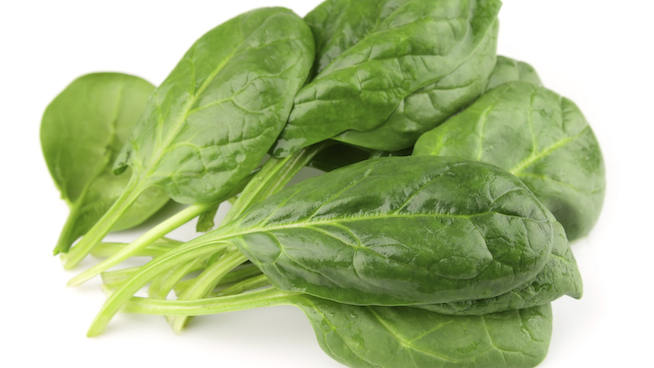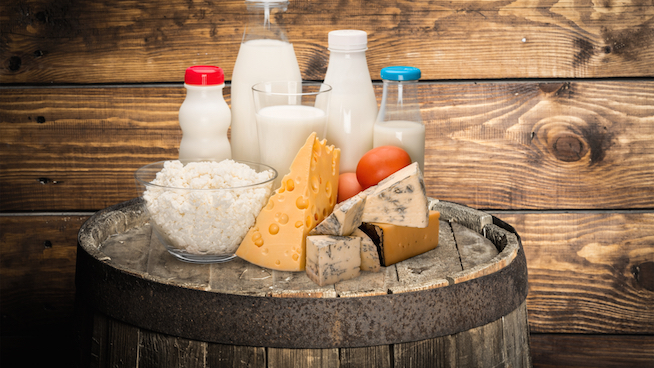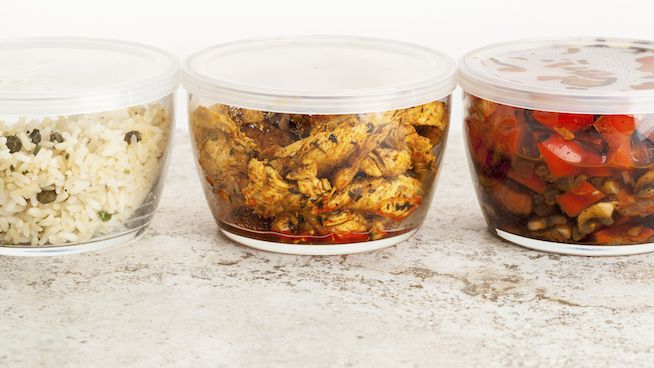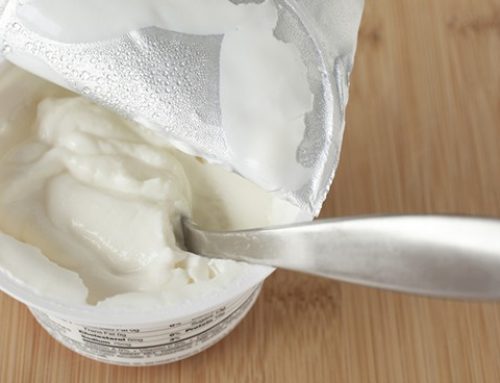Salad Showdown: Which Greens Are the Healthiest?
Whenever we chow down on a salad, we tend to think we’re eating healthy; but the health benefits of a salad, like any other meal, depend entirely on the nutritional breakdown of its ingredients. Some provide more performance-fueling vitamins and minerals than others, and you want to squeeze as much athletic performance as you can out of each bite. Here’s a snapshot of a few of those leafy greens, ranked from least to most athlete-friendly (but none of them are bad options).
RELATED: These Surprising Veggies Fight Inflammation
Iceberg Lettuce
Iceberg lettuce doesn’t offer much. It’s very low in calories—a chopped cup clocks in at a paltry 8 calories (compared to 28 for arugula and 33 for kale)–but you don’t get much in those calories, since iceberg is mostly water and nutritionally neutral. You’d be better off building your salad with another option on this list.
Arugula
This green is full of vitamin A, providing a boost for bone and brain health. It’s also rich in iron, which is important for hard-working athletes, since it helps red blood cells deliver oxygen to muscles. Arugula has a distinctly peppery flavor, so keep the additions simple. Opt for a high quality olive oil dressing and a salty Parmesan.
RELATED: Recipes for Healthier Junk Food
Spring Mix
Spring mix is a little lighter in texture and flavor than arugula. The exact mixture varies from brand to brand, but most spring mixes contain lettuces, arugula and spinach. Spring mix also tends to include “baby greens,” meaning they are picked just a few weeks after their seeds are planted. Not only are they more tender, they also have a bounty of nutrients, because the plant is still feeding them lots of energy for growth.
Romaine Lettuce
Romaine contains vitamins K, C and A, which keep your immune system performing at its peak. Try pairing it with olive oil, green onions, green peppers and some feta cheese.
RELATED: Which Athlete Eats More: an NFL Player or a Endurance Runner?
Spinach
One of the most common salad bases, spinach is also among the most nutritionally powerful. It’s an outstanding source of iron and manganese, good for bone and skin health, and it also assists in fighting free radicals. Spinach also delivers a strong dose of folate, which supports the production of red blood cells, which deliver oxygen to the muscles during games and workouts. Although it’s a little bland by itself, spinach goes great with a fruit-infused vinaigrette, a hearty grain like quinoa, or beans, which also provide protein.
Kale
We have a winner! Kale packs the strongest strongest nutritional punch of any green, providing calcium and vitamins A and C. It’s also a good source of potassium, iron and manganese. Unlike other leafy greens, kale does not get soggy or wilt. Instead, it holds its texture and absorbs flavors very well when tossed with other foods. Due to its somewhat bitter taste, kale is best paired with a creamy topping, like a Greek yogurt-based dressing.
BONUS: Shredded Brussels Sprouts
This fibrous option is becoming more popular as a salad base. It has a crunchier texture than the other greens on this list, and it’s high in vitamins C and K. Vitamin K keeps your bones strong and your arteries pliable. Try pairing shredded Brussels sprouts with a lemon-based dressing, toasted walnuts and dried fruit.
RELATED: Powerful Vegetarian Recipes
What To Top Your Greens With
My favorite additions to any of these greens deliver a variety of healthy fats, proteins and carbohydrates. Make sure your salad contains these nutrients as well as strong flavor and diverse texture—you don’t want to eat a wimpy salad! To get a complete meal, top off your greens with some of these foods:
- Complex Carbohydrate: beans, quinoa, sweet potato, whole wheat pasta, fruit
- Lean Protein: chicken, salmon, tuna, tofu, eggs
- Healthy Fat: avocado, nuts, seeds, oil-based dressing
RECOMMENDED FOR YOU
Salad Showdown: Which Greens Are the Healthiest?
Whenever we chow down on a salad, we tend to think we’re eating healthy; but the health benefits of a salad, like any other meal, depend entirely on the nutritional breakdown of its ingredients. Some provide more performance-fueling vitamins and minerals than others, and you want to squeeze as much athletic performance as you can out of each bite. Here’s a snapshot of a few of those leafy greens, ranked from least to most athlete-friendly (but none of them are bad options).
RELATED: These Surprising Veggies Fight Inflammation
Iceberg Lettuce
Iceberg lettuce doesn’t offer much. It’s very low in calories—a chopped cup clocks in at a paltry 8 calories (compared to 28 for arugula and 33 for kale)–but you don’t get much in those calories, since iceberg is mostly water and nutritionally neutral. You’d be better off building your salad with another option on this list.
Arugula
This green is full of vitamin A, providing a boost for bone and brain health. It’s also rich in iron, which is important for hard-working athletes, since it helps red blood cells deliver oxygen to muscles. Arugula has a distinctly peppery flavor, so keep the additions simple. Opt for a high quality olive oil dressing and a salty Parmesan.
RELATED: Recipes for Healthier Junk Food
Spring Mix
Spring mix is a little lighter in texture and flavor than arugula. The exact mixture varies from brand to brand, but most spring mixes contain lettuces, arugula and spinach. Spring mix also tends to include “baby greens,” meaning they are picked just a few weeks after their seeds are planted. Not only are they more tender, they also have a bounty of nutrients, because the plant is still feeding them lots of energy for growth.
Romaine Lettuce
Romaine contains vitamins K, C and A, which keep your immune system performing at its peak. Try pairing it with olive oil, green onions, green peppers and some feta cheese.
RELATED: Which Athlete Eats More: an NFL Player or a Endurance Runner?
Spinach
One of the most common salad bases, spinach is also among the most nutritionally powerful. It’s an outstanding source of iron and manganese, good for bone and skin health, and it also assists in fighting free radicals. Spinach also delivers a strong dose of folate, which supports the production of red blood cells, which deliver oxygen to the muscles during games and workouts. Although it’s a little bland by itself, spinach goes great with a fruit-infused vinaigrette, a hearty grain like quinoa, or beans, which also provide protein.
Kale
We have a winner! Kale packs the strongest strongest nutritional punch of any green, providing calcium and vitamins A and C. It’s also a good source of potassium, iron and manganese. Unlike other leafy greens, kale does not get soggy or wilt. Instead, it holds its texture and absorbs flavors very well when tossed with other foods. Due to its somewhat bitter taste, kale is best paired with a creamy topping, like a Greek yogurt-based dressing.
BONUS: Shredded Brussels Sprouts
This fibrous option is becoming more popular as a salad base. It has a crunchier texture than the other greens on this list, and it’s high in vitamins C and K. Vitamin K keeps your bones strong and your arteries pliable. Try pairing shredded Brussels sprouts with a lemon-based dressing, toasted walnuts and dried fruit.
RELATED: Powerful Vegetarian Recipes
What To Top Your Greens With
My favorite additions to any of these greens deliver a variety of healthy fats, proteins and carbohydrates. Make sure your salad contains these nutrients as well as strong flavor and diverse texture—you don’t want to eat a wimpy salad! To get a complete meal, top off your greens with some of these foods:
- Complex Carbohydrate: beans, quinoa, sweet potato, whole wheat pasta, fruit
- Lean Protein: chicken, salmon, tuna, tofu, eggs
- Healthy Fat: avocado, nuts, seeds, oil-based dressing

















